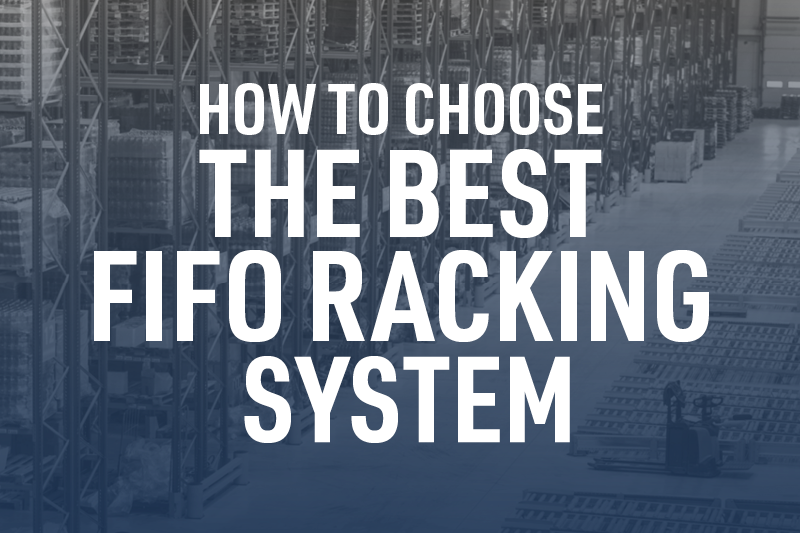
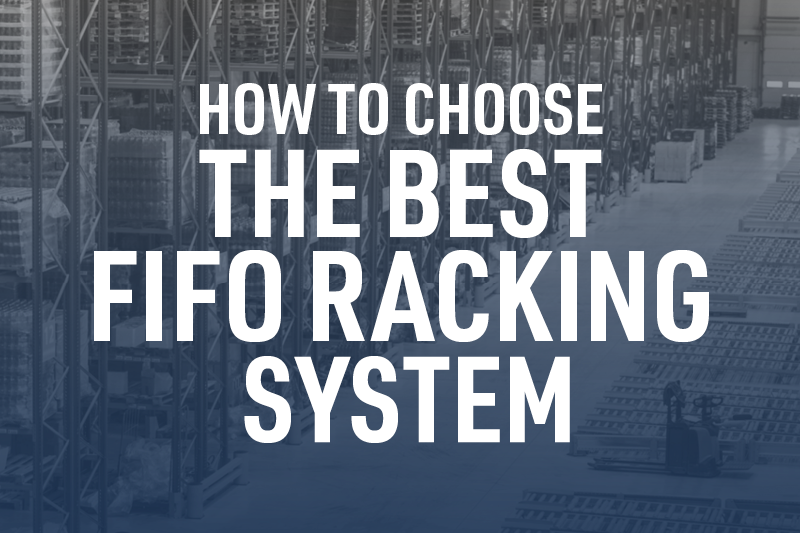 When you buy milk, do you ever dig past the first few on the shelf to pick one with a later expiration date? This trick works because grocery stores use a FIFO food storage system when stocking their shelves. They put the milk that comes in first at the front so it sells before it spoils. Similarly, if you have a warehouse with high inventory turnover or that stores materials with expiration dates, FIFO racking systems are a huge boon. However, FIFO racking systems aren’t just for the food and beverage industry. They can benefit any warehouse that wants to improve productivity, increase storage density, and reduce spoilage loss.
When you buy milk, do you ever dig past the first few on the shelf to pick one with a later expiration date? This trick works because grocery stores use a FIFO food storage system when stocking their shelves. They put the milk that comes in first at the front so it sells before it spoils. Similarly, if you have a warehouse with high inventory turnover or that stores materials with expiration dates, FIFO racking systems are a huge boon. However, FIFO racking systems aren’t just for the food and beverage industry. They can benefit any warehouse that wants to improve productivity, increase storage density, and reduce spoilage loss.
There are several types of FIFO racking systems on the market. Each can be used as a stand-alone product or in conjunction with other FIFO storage methods. Understanding these general FIFO systems will help you get the most out of your storage space. Read on to learn about the various types of FIFO racking systems and how to find the right system for you.
What Are the Types of FIFO Racking Systems?
There are 3 general categories of FIFO racking systems. Each offers unique benefits that are balanced by certain drawbacks. Because of this, many storage facilities use a combination of the 3 to maximize their warehouse density and flexibility.
Selective Pallet Racking
Selective Pallet Racking is the racking style you are probably most familiar with. In this system, racks are stocked a single pallet deep so that all products can be accessed without moving others. This style of FIFO storage allows for the most selectivity but has the lowest product density.
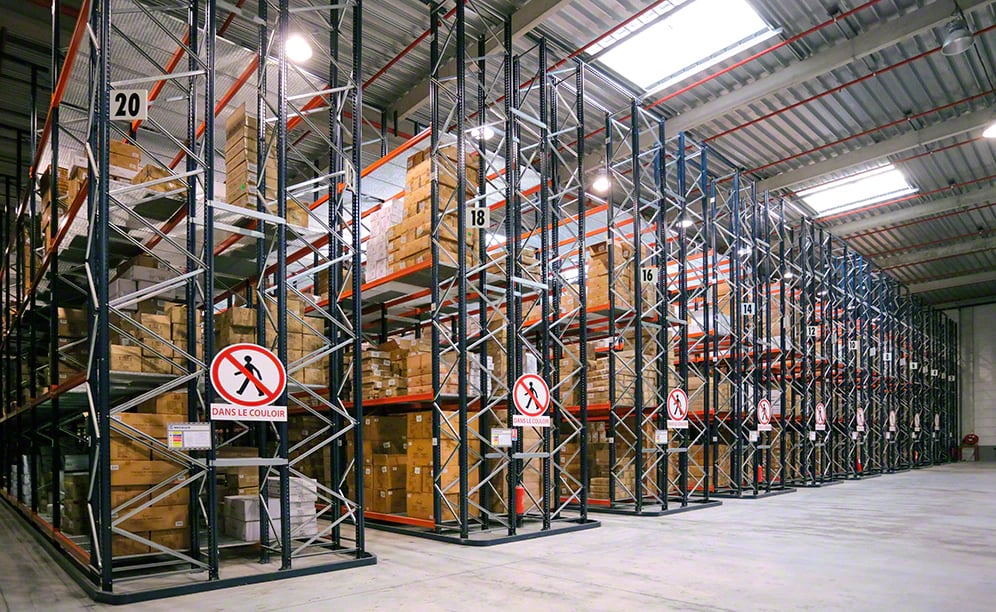
Drive-Through Pallet Racking
Drive-Through Racking is a method that creates lanes of identical palleted material. These lanes are loaded top-to-bottom from one end of the lane and then unloaded top-to-bottom from the other side. This eliminates the number of picking aisles needed, increasing storage density. However, each lane only supports a single product SKU, offering limited selectivity.
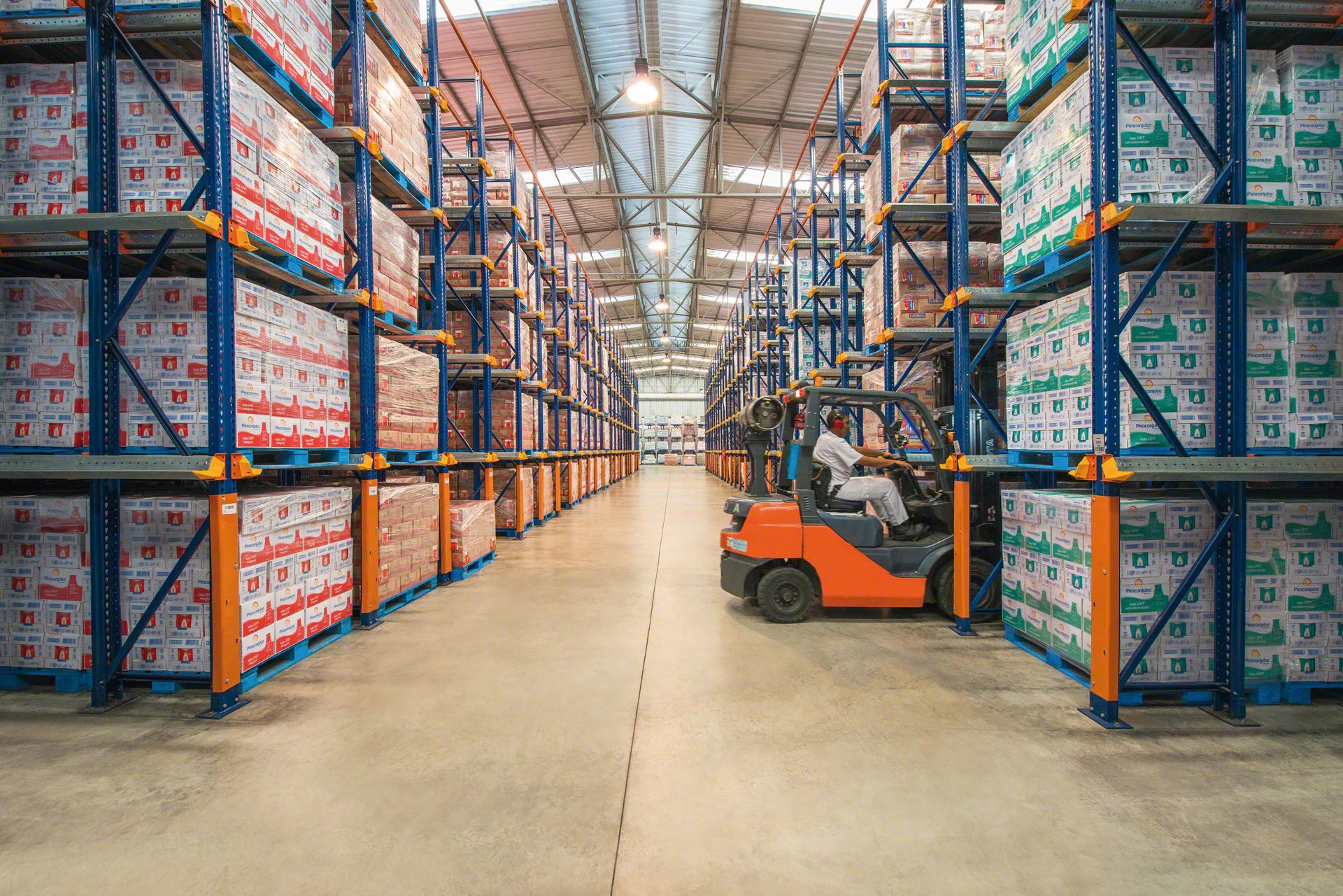
Gravity Flow Racking Systems
There are two broad categories of Gravity Flow Racking Systems: Carton Flow and Pallet Flow. These differ primarily in the packaging volume of the material and otherwise work very similarly. In this FIFO system, racks support flow rack conveyors set at a slight decline. Product is loaded from the track's upper end at the back and gravity fed to the lower picker end at the front. This offers excellent storage density and mid-range selectivity since track widths can be configured to accommodate products of various sizes.
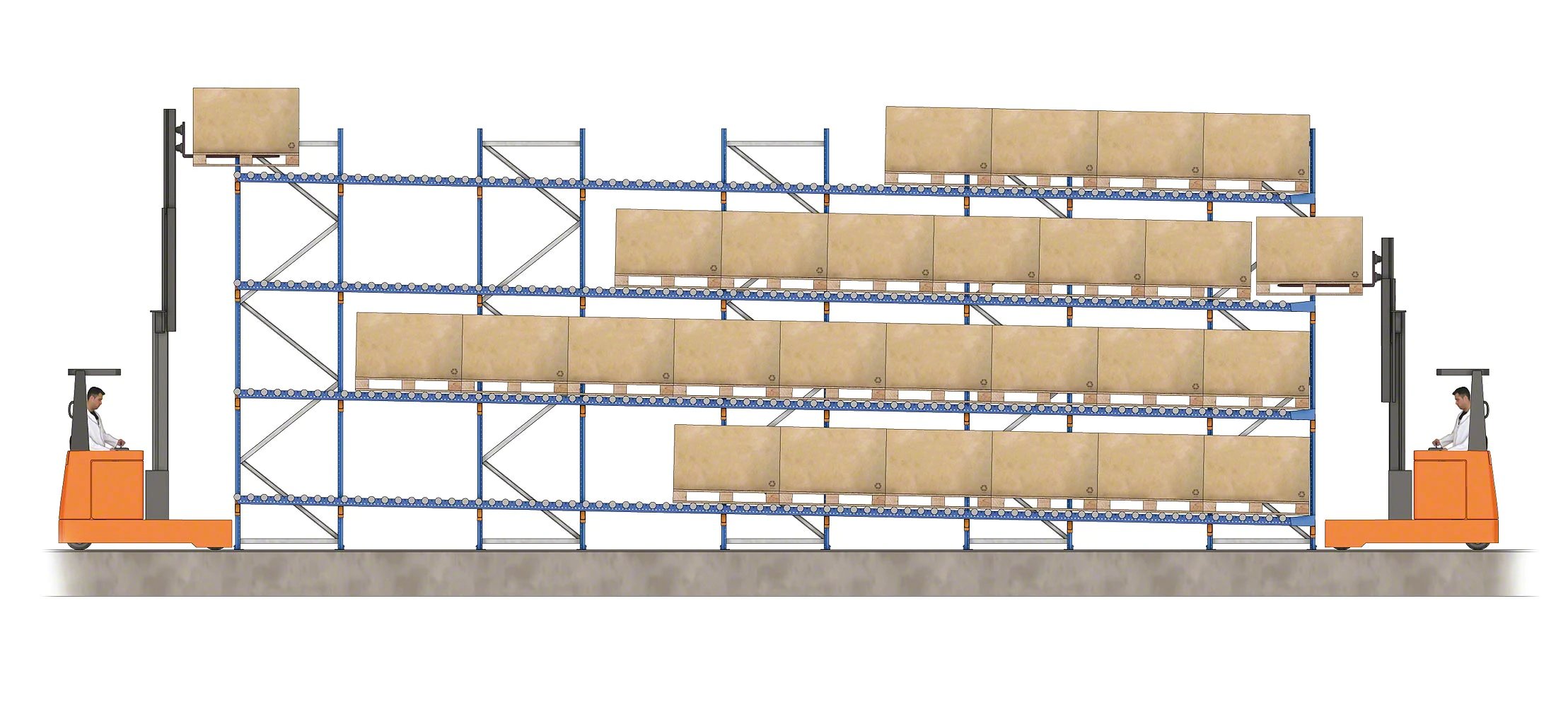
How Do You Pick a FIFO System?
In all reality, you aren’t likely to pick a single FIFO system. Instead, you will probably use a combination of the available options to meet your needs. However, which of the options you choose and how much of your storage space you devote to each will be a decision based on several factors.
Product Circulation
Different FIFO systems lend themselves well to different levels of product circulation. Selective Pallet Racking works well for products that turn around very rapidly. Drive-Through Racking works well for products that may sit for a time or move in single large shipments. Gravity Flow Racking Systems offer a middle ground.
Product Variety
Selectivity (the ability to access each SKU without moving others) is vital if you offer a large variety of products. Selective Pallet Racking provides the most selectivity, and Drive-Through Racking offers the least. Again, Gravity Flow Racking Systems are usually a solid middle ground.
Product Stability
Some products have longer shelf lives than others. Paint can sit longer than milk, for example. For products that expire rapidly, it is critical to use a FIFO system that ensures the product that expires the soonest is picked first. In this case, Gravity Flow Racking Systems are the strongest choice as they automatically feed first-in products to the front of the queue. Conversely, Selective Pallet Racking does not perform as well here since it relies on the order picker consciously selecting the product that expires the soonest.
Product Size
All of the above methods can accommodate palleted products. However, Drive-Through Racking can only be used with palleted products. If your inventory uses cartons or other smaller-sized containers, Selective Pallet Racking or Gravity Flow Racking Systems will likely suit you better. Gravity Flow Systems, in particular, lend themselves well to cartons and other smaller units.
Available Storage Space
Every warehouse benefits from space optimization. However, some struggle with more severe restrictions on space than others. If space is a concern, you may want to optimize for storage density. In that case, Gravity Flow Racking Systems or Drive-Through Racking may be your best choice, as they offer better storage density than Selective Pallet Racking.
Who Can Help You Find the Best Options?
Rarely is a warehouse focused on only one of the above considerations. So selecting the right FIFO racking system depends on balancing your storage needs, prioritizing one in certain areas and another elsewhere. Making that decision can be a challenge in and of itself, but the Lilly Company is here to help. Our experts are trained to assess your facility’s storage needs and make recommendations to support your priorities. To get started, contact us online or visit one of our Mid-South locations:
Arkansas - Jonesboro
Alabama - Birmingham, Dothan, Irondale, Madison, Mobile, and Montgomery
Mississippi - Tupelo, and Richland
Tennessee - Jackson, Memphis, Knoxville, and Kingsport
Further Reading
Different Types of Pallet Racking
Used Pallet Racking: Is It Worth The Risk?
Clark OSQ Order Picker Product Review
Posts by Tag
- Forklift (67)
- Forklift Service (20)
- Electric Forklifts (17)
- Forklift Safety (15)
- Warehouse Automation (14)
- Forklift Attachments (12)
- Product Review (12)
- Toyota Forklifts (12)
- Warehouse Planning (11)
- Parts (10)
- Clark Forklifts (8)
- Pallet Racking (8)
- Customer Solutions (7)
- Loading Docks (7)
- Material Handling Education (7)
- Purchasing Options (7)
- Aerial Equipment (6)
- Forklift Batteries (6)
- Forklift Rental (6)
- Forklift Tires (5)
- Heavy Equipment (5)
- Forklift Accessories (4)
- Forklift Fleet Management (4)
- Forklift Training (4)
- Pallet Jacks (4)
- Products (4)
- Utility Vehicles (4)
- Yard Spotter Trucks (4)
- Komatsu (3)
- Linde (3)
- Specialty Forklifts (3)
- Used Equipment (3)
- Warehouse Doors (3)
- IC Forklifts (2)
- Manitou (2)
- COMBiLift (1)
- Custom Shop (1)
- Forklift Brakes (1)
- Forklift Warranty (1)
- Gehl (1)
- Recruitment (1)









